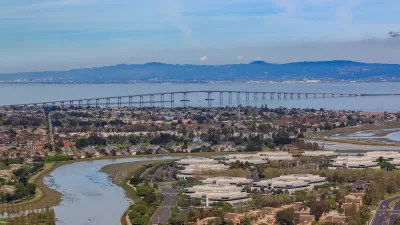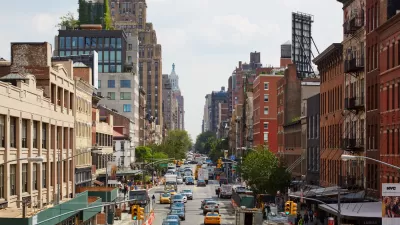Continuing his series examining the changes and new provisions detailed in the new federal surface transportation bill, Jason Jordan, APA's Director of Policy and Government Affairs, looks at the new Transportation Alternatives program.
Replacing the Transportation Enhancements, Safe Routes to School, and Scenic Byways programs from the prior comprehensive funding bill (SAFETEA-LU), the new Transportation Alternatives (TA) program was one of the most contentious pieces of the MAP-21 negotiations. So where did the final bill land?
Although funding for the program continues to be dedicated (albeit at FY 2009 levels), "The major compromise reached on Transportation Alternatives is to
essentially expand both flexibility for states and control for
metropolitan regions," writes Jordan. The new program expands the types of projects eligible for funding and gives each state an avenue to "transfer its balance of unobligated funding to other
projects."
According to Jordan, "Supporters of TA-eligible projects will have new opportunities to pursue
local projects funding through the 50 percent set aside for metro
areas. But, these same supporters will have to pressure states to ensure
that vital bike, pedestrian, and safety resources are not siphoned off
to other projects by state officials."
FULL STORY: Inside MAP-21: Transportation Alternatives

Planetizen Federal Action Tracker
A weekly monitor of how Trump’s orders and actions are impacting planners and planning in America.

Chicago’s Ghost Rails
Just beneath the surface of the modern city lie the remnants of its expansive early 20th-century streetcar system.

San Antonio and Austin are Fusing Into one Massive Megaregion
The region spanning the two central Texas cities is growing fast, posing challenges for local infrastructure and water supplies.

Since Zion's Shuttles Went Electric “The Smog is Gone”
Visitors to Zion National Park can enjoy the canyon via the nation’s first fully electric park shuttle system.

Trump Distributing DOT Safety Funds at 1/10 Rate of Biden
Funds for Safe Streets and other transportation safety and equity programs are being held up by administrative reviews and conflicts with the Trump administration’s priorities.

German Cities Subsidize Taxis for Women Amid Wave of Violence
Free or low-cost taxi rides can help women navigate cities more safely, but critics say the programs don't address the root causes of violence against women.
Urban Design for Planners 1: Software Tools
This six-course series explores essential urban design concepts using open source software and equips planners with the tools they need to participate fully in the urban design process.
Planning for Universal Design
Learn the tools for implementing Universal Design in planning regulations.
planning NEXT
Appalachian Highlands Housing Partners
Mpact (founded as Rail~Volution)
City of Camden Redevelopment Agency
City of Astoria
City of Portland
City of Laramie




























